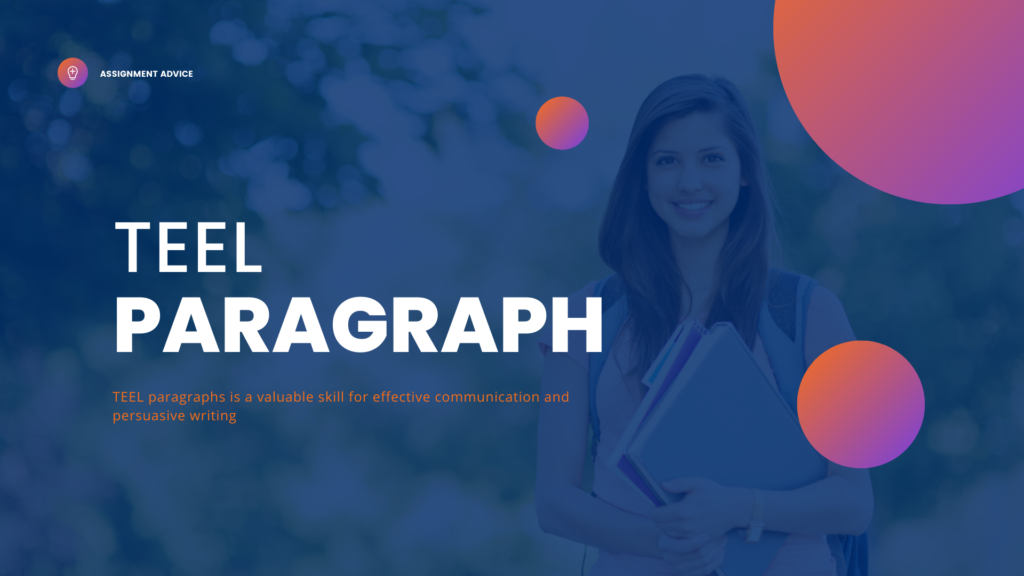TEEL Paragraph: Mastering the Art of Structured Writing

Introduction: Effective writing is a fundamental talent, and creating well-structured paragraphs is a critical component of effective communication. The TEEL paragraph structure is a popular and extensively used paragraph form. TEEL stands for Topic sentence, Explanation, Evidence, and Link, and it is a method for organising and presenting your thoughts clearly. We will dig into the complexities of the TEEL paragraph, analyse its components in depth, and present practical examples to help you master the art of organised writing in this thorough book.
I. Understanding the TEEL Paragraph:
The TEEL paragraph is a structure for writing a clear and logical paragraph. It makes certain that each paragraph delivers a single core point and backs it up with evidence and explanation. The TEEL format aids readers in following the flow of your argument, making your writing more convincing and understandable.
II. The Components of TEEL Paragraph:
Sentence Topic (T):
The topic phrase serves as the foundation of your paragraph, establishing the primary concept or argument.
It introduces the paragraph’s main idea and serves as a mini-thesis statement.
A powerful subject phrase is brief, precise, and summarises the entire paragraph.
(E) Explanation:
You must describe your key concept further after giving the topic sentence.
Context, background information, and clarification of any terminology or concepts mentioned in the topic phrase are required.
The explanation supports your argument and helps readers appreciate the significance of your claim.
The following is evidence (E):
Include proof in the form of examples, facts, statistics, quotes, or references to back up your topic statement.
The evidence should be pertinent, believable, and closely related.
Link (L):
The link sentence relates your evidence to the topic sentence’s major point.
It demonstrates the connection between the facts and the primary argument, which ties the paragraph together.
The link sentence either transitions to the following paragraph or supports the broader argument.
III. Understanding the TEEL Structure:
Topic Sentences that are Clear and Concise:
- Begin your paragraph with a subject sentence that is powerful and succinct and expresses the key point.
- Avoid imprecise or broad generalisations and instead concentrate on a single issue that may be elaborated successfully in the paragraph.
Give a Detailed Explanation:
- Following the subject sentence, give background and explain your point with a full explanation.
- Extend on the significance of your core point to ensure that readers comprehend its significance.
Provide Support with Relevant Evidence:
- Include pertinent and persuasive facts to support your primary point.
- Choose evidence that supports your general thesis or argument and is related to your topic phrase.
Cite your sources correctly:
- If you use external sources as proof, make sure to properly reference them.
- To retain academic integrity, use the proper citation style, such as APA, MLA, or Chicago.
Return to the Topic Sentence:
- Finish your paragraph with a powerful link sentence that underlines the link between the facts and the primary point.
- The link sentence should segue easily to the following paragraph or summarise the primary argument.
IV. TEEL Paragraph Examples:
Topic Sentences: Renewable energy is a feasible alternative for combating climate change and lowering greenhouse gas emissions.
Explanation: As global energy consumption rises, the reliance on fossil fuels poses a serious environmental risk. The combustion of fossil fuels emits carbon dioxide and other greenhouse gases, which contribute to global warming and climate change.
Evidence: According to an International Energy Agency research, renewable energy sources such as solar, wind, and hydropower can help satisfy energy demands while cutting carbon emissions by 70% by 2050.
Link: Embracing renewable energy technology is not only an ethical decision for environmental protection, but also a realistic one for ensuring a sustainable future for future generations.
Topic Sentence: Stricter gun control measures implemented by the government are critical to reducing gun-related violence in our society.
Explanation: The United States has one of the highest rates of gun violence among industrialised countries, with weapons responsible for thousands of fatalities and injuries each year.
Evidence: According to a research published in the American Journal of Public Health, states with stricter gun control legislation had much lower rates of gun-related mortality than states with lax rules.
Link: By implementing extensive background checks, restricting access to high-capacity magazines, and encouraging responsible gun ownership, the government may take an important step towards establishing a safer and more secure society.
V. Benefits of Using TEEL Paragraphs:
Clarity and coherence: The TEEL structure guarantees that each paragraph has a clear emphasis and logical flow of ideas, allowing readers to follow your argument more easily.
Effective Communication: By offering facts and explanation, you give a well-reasoned argument to your audience that is more compelling and convincing.
Improved Writing abilities: Practising TEEL paragraphs enhances your writing abilities by assisting you in organising and presenting ideas in an organised manner.
Supporting Your Thesis: TEEL paragraphs increase the overall quality of your writing by reinforcing your thesis statement with well-supported arguments.
Conclusion:
Using TEEL paragraphs to master the art of organised writing is a key skill for successful communication and compelling writing. The methodical presentation of a precise topic phrase, followed by explanation, evidence, and link, promotes coherence and coherence in your paragraphs. You may increase the impact of your writing and deliver well-reasoned arguments that capture your readers by employing the TEEL format and relevant examples. The TEEL paragraph will be your guide to clear and engaging writing that engages and persuades your readers, whether you are writing academic essays, research papers, or persuasive articles.
